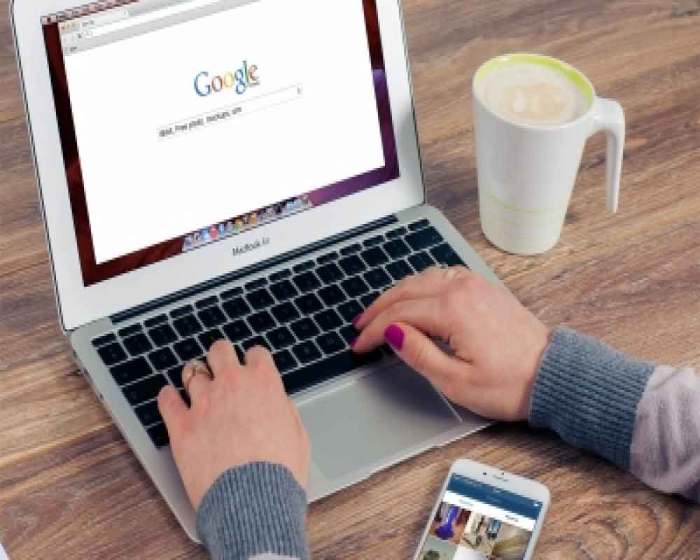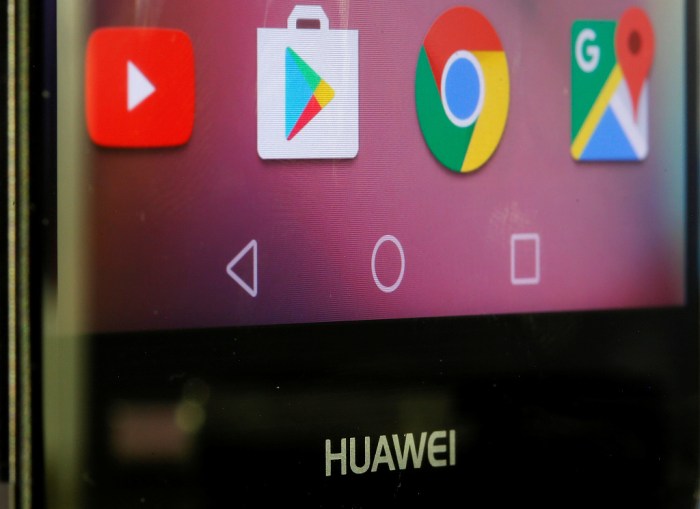The Google-Huawei Partnership
The relationship between Google and Huawei has been a rollercoaster ride, marked by periods of close collaboration and subsequent separation due to geopolitical complexities. Understanding this dynamic is crucial to grasping the potential of a renewed partnership.
History of Collaboration
The Google-Huawei partnership dates back to the early days of Android, with Huawei becoming a major player in the Android ecosystem. This collaboration led to the development of popular devices like the Huawei Mate series, known for their innovative features and competitive pricing. Key projects include:
- Huawei’s participation in the Android Open Source Project (AOSP), contributing to the development of the Android operating system.
- Huawei’s use of Google Mobile Services (GMS), including apps like Gmail, Google Maps, and Google Play Store, on its devices, providing users with a seamless experience.
- Huawei’s integration of Google’s hardware and software technologies, such as Google Assistant and Google Lens, into its devices.
Impact of US Sanctions
In 2019, the US government imposed sanctions on Huawei, restricting the company’s access to American technology, including Google services. This move had a significant impact on Huawei’s smartphone business, as it lost access to key apps and services that were essential to the user experience. The sanctions forced Huawei to develop its own operating system, HarmonyOS, and its own app store, AppGallery, to mitigate the impact of the Google ban.
Potential Benefits of a Renewed Partnership
A renewed partnership between Google and Huawei would bring several potential benefits:
- Access to Google Services: Huawei devices would once again be able to offer Google services, providing users with a wider range of apps and functionalities, enhancing user experience and attracting a broader market share.
- Increased Innovation: Collaboration could lead to joint research and development initiatives, pushing the boundaries of innovation in areas like AI, 5G, and cloud computing. This would benefit both companies and the wider technology industry.
- Global Market Expansion: A renewed partnership would allow Huawei to expand its reach into new markets, particularly in regions where Google services are popular, leveraging Google’s global presence and brand recognition.
- Economic Growth: The partnership would stimulate economic growth, creating jobs and boosting the global technology industry. This could be particularly beneficial in countries where Huawei has a strong presence.
The Tablet Market Landscape: Google Huawei Tablet In The Works
The tablet market, while experiencing a period of consolidation, remains a significant segment in the technology landscape. Key players continue to innovate and cater to diverse user needs, with the market characterized by a dynamic interplay of factors like price, features, and user demographics.
The tablet market is dominated by a few key players, each with its own strengths and strategies. Apple, with its iPad line, continues to hold a significant market share, known for its premium design and ecosystem integration. Samsung, a close contender, offers a range of tablets across price points, appealing to both consumers and enterprise users. Other notable players include Lenovo, Amazon, and Microsoft, each focusing on specific niches and user segments.
Target Audience for a Google-Huawei Tablet
A Google-Huawei tablet would target a diverse audience, potentially encompassing:
* Consumers seeking affordability and value: This segment is price-sensitive and prioritizes basic functionality, making budget-friendly tablets an attractive option.
* Students and educators: Educational institutions increasingly rely on tablets for learning and teaching, demanding devices with long battery life, portability, and access to educational apps.
* Professionals and creatives: This segment requires tablets with powerful processors, high-resolution displays, and compatibility with productivity apps and creative software.
* Casual gamers: Gamers seeking portable gaming experiences value tablets with responsive touchscreens, decent processing power, and access to a library of mobile games.
Comparison of Google and Huawei Tablets
Google and Huawei, both established technology giants, offer a range of tablets with distinct features and specifications:
| Feature | Google Tablets | Huawei Tablets |
|---|---|---|
| Operating System | Android (with Google Play Store) | HarmonyOS (with Huawei AppGallery) |
| Design | Sleek and minimalist | Premium build quality, often with metal unibody |
| Display | Vibrant displays with high refresh rates | High-resolution displays, often with HDR support |
| Processor | Powerful processors, often from Qualcomm or MediaTek | Kirin processors (developed by Huawei) |
| Camera | Decent cameras for video calls and photography | High-quality cameras with advanced features |
| Battery Life | Good battery life, typically lasting a full day | Long battery life, often exceeding a full day |
| Storage | Wide range of storage options, including expandable storage | Generous storage options, often with expandable storage |
| Price | Competitive pricing, with options for various budgets | Premium pricing, often positioned as high-end devices |
A Google-Huawei tablet could potentially combine the strengths of both brands, offering a compelling combination of software and hardware features.
Potential Features and Specifications
The potential Google-Huawei tablet is an exciting prospect, combining the best of both worlds: Google’s software ecosystem and Huawei’s hardware expertise. This hypothetical device promises a compelling blend of cutting-edge features and user-friendly experiences.
Design and Display
The tablet could boast a sleek, premium design, possibly with a metal unibody construction. A large, high-resolution display, perhaps with a 12.9-inch or 11-inch screen, would be ideal for media consumption and productivity. The display could incorporate advanced features like a high refresh rate for smoother scrolling and a wide color gamut for vibrant visuals.
Processor and Performance
Under the hood, the tablet could be powered by a powerful processor from Huawei’s Kirin series, known for their impressive performance. The device would likely have ample RAM and storage, ensuring smooth multitasking and ample space for apps and files.
Camera System, Google huawei tablet in the works
The tablet could feature a high-quality camera system, capable of capturing detailed photos and videos. A dual-camera setup with a wide-angle lens and a telephoto lens could be included, offering versatility for different shooting scenarios.
Battery Life and Charging
Long battery life is crucial for a tablet, and this device could offer extended usage on a single charge. Fast charging technology would allow for quick top-ups when needed.
Connectivity and Audio
The tablet would likely support the latest wireless connectivity standards, including Wi-Fi 6 and Bluetooth 5.2. It could also feature a USB-C port for data transfer and charging. High-quality speakers with surround sound capabilities would enhance the multimedia experience.
Google Services Integration
The Google-Huawei partnership would allow for the seamless integration of Google services, including the Google Play Store, Google Assistant, and popular Google apps like Gmail, YouTube, and Google Maps. This would provide users with access to a vast library of apps and a familiar, intuitive user experience.
Huawei’s Technologies
The tablet could also leverage Huawei’s proprietary technologies, such as HarmonyOS, its own mobile operating system. HarmonyOS could offer unique features and functionalities, such as enhanced security and privacy, as well as a more streamlined user interface. The tablet could also integrate Huawei’s own app ecosystem, providing users with access to a range of apps and services specifically designed for Huawei devices.
Potential Features and Specifications
- Display: 12.9-inch or 11-inch OLED display with a 120Hz refresh rate and HDR support.
- Processor: Huawei Kirin 9000 series chipset.
- RAM: 8GB or 12GB.
- Storage: 128GB or 256GB.
- Camera: 13MP main camera, 5MP ultrawide camera, 8MP front-facing camera.
- Battery: 10,000mAh battery with 66W fast charging.
- Connectivity: Wi-Fi 6, Bluetooth 5.2, USB-C port.
- Operating System: HarmonyOS 3.0.
- Audio: Quad speakers with Dolby Atmos support.
Market Impact and Potential Challenges
A Google-Huawei tablet, if successful, could shake up the tablet market, particularly in the mid-range and high-end segments. It has the potential to attract a diverse audience, from consumers seeking a premium experience to businesses looking for reliable productivity tools. However, the partnership faces several challenges that could hinder its success.
Competitive Landscape and Target Audience
The tablet market is fiercely competitive, dominated by established players like Apple, Samsung, and Microsoft. A Google-Huawei tablet will need to differentiate itself to carve out a niche. The target audience for this device could be:
- Android enthusiasts: Huawei’s expertise in Android optimization, coupled with Google’s software integration, could appeal to users who value a seamless Android experience.
- Productivity-focused users: With Google Workspace integration and Huawei’s powerful hardware, the tablet could become a viable alternative to laptops for professionals.
- Media consumption and entertainment: High-quality displays, powerful processors, and access to Google’s entertainment services could attract users seeking an immersive media experience.
Potential Challenges for the Partnership
- Regulatory hurdles: The partnership faces geopolitical challenges, as Huawei has been subject to US sanctions. Navigating these regulations and ensuring smooth access to essential technologies could be a major hurdle.
- Consumer perception: Huawei’s brand image has been impacted by the US sanctions. The partnership will need to address these concerns and build trust with consumers.
- Competition: The tablet market is crowded, with numerous established players offering a wide range of options. The Google-Huawei tablet will need to stand out and offer compelling features to compete effectively.
Strategies for Overcoming Challenges
- Leverage Google’s software ecosystem: Deep integration with Google services, such as Google Workspace, Google Play Store, and Google Assistant, could provide a significant advantage.
- Focus on innovation and differentiation: Offering unique features, such as advanced camera capabilities, innovative display technology, or cutting-edge design, can attract attention.
- Aggressive pricing strategy: Competitive pricing can help the tablet gain market share, especially in the mid-range segment.
- Targeted marketing campaigns: Effective marketing campaigns highlighting the device’s strengths and addressing consumer concerns can build brand awareness and generate interest.
Google huawei tablet in the works – The idea of a Google Huawei tablet is a tantalizing one, a potential game-changer in the tablet market. However, the path to its realization is paved with challenges. From regulatory hurdles to consumer perception, the success of such a partnership hinges on careful navigation and a commitment to building a truly compelling product. Only time will tell if the stars will align for this potential tech titan, but one thing is certain: the world is watching with bated breath.
While Google and Huawei are working on a tablet that could shake up the tech world, a chilling reminder of the potential dangers of technology comes from the FBI, who recently warned that foreign hackers have compromised state election databases. This news underscores the need for robust cybersecurity measures, especially as we rely more on technology for everything from voting to banking.
The Google Huawei tablet, if successful, will need to prioritize security alongside innovation to ensure user trust and a safe digital experience.
 Standi Techno News
Standi Techno News

